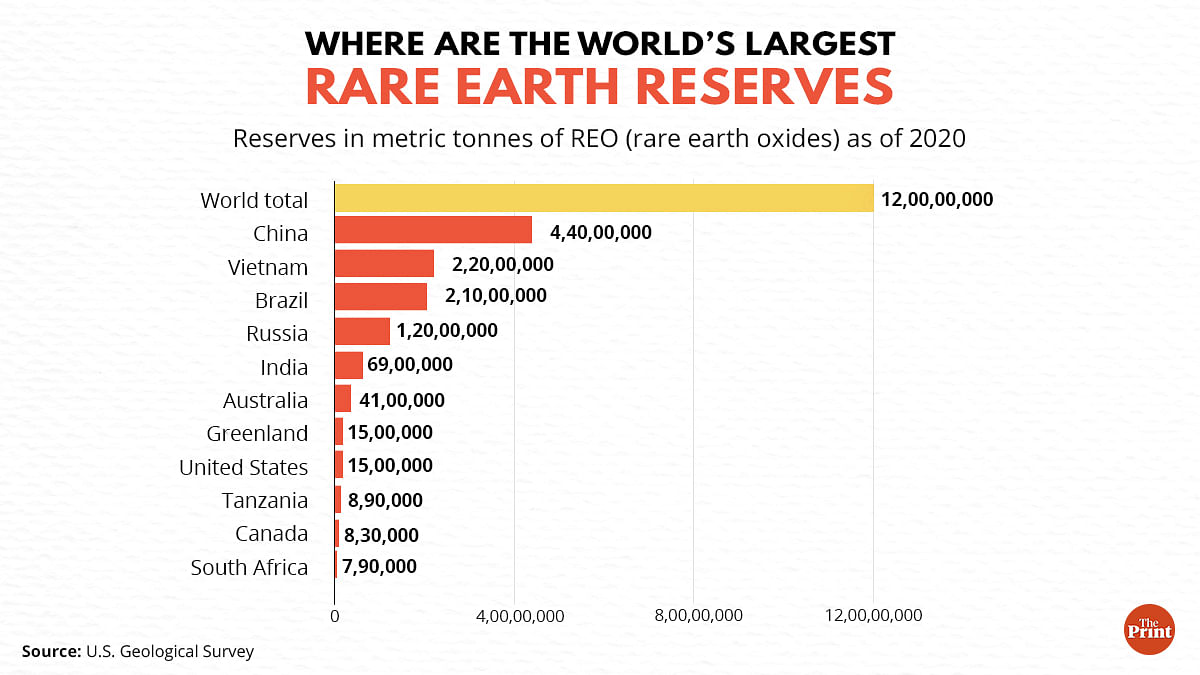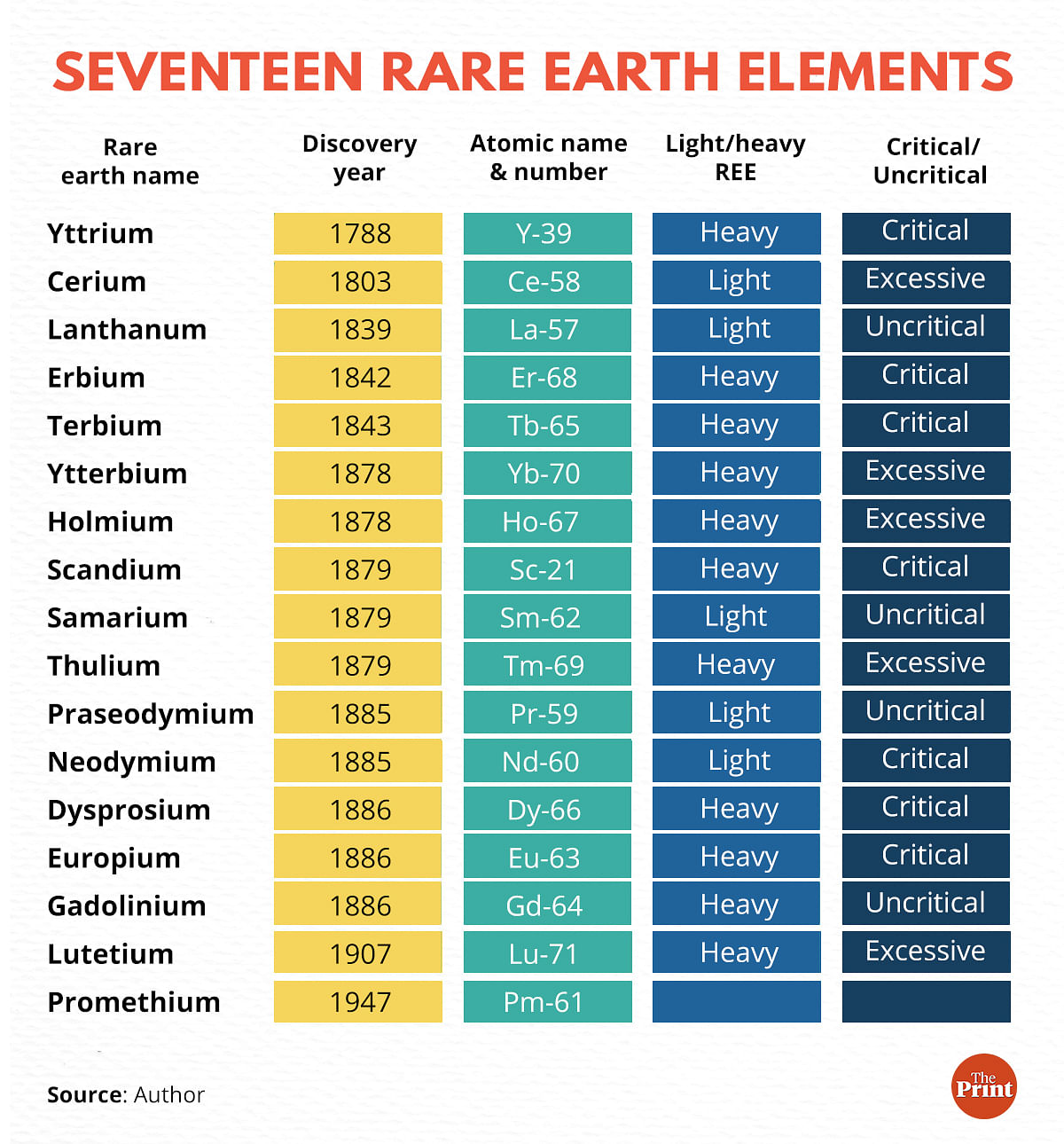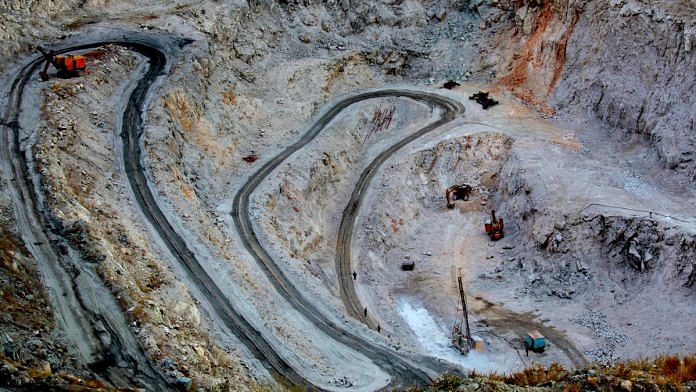The fourth US-India 2+2 dialogue between S. Jaishankar, Rajnath Singh and Antony Blinker, Llyod Austin this month put the focus back on building cooperation on supply chain resilience, trade partnership for critical and emerging technology to deal with issues of climate, economy and pandemic impact.
Out of all these areas of discussion enhancing India-US partnership, the critical minerals and emerging technology are the major need of the hour for their green future goals.
Rare earth elements and critical minerals
According to the International Union of Pure and Applied Chemistry, ‘Rare Earth Metals are a family of 17 elements in the periodic table, which involve 15 Lanthanides group elements, along with Yttrium and Scandium. They were discovered in 18th-19th century, with Yttrium being the first and Promethium the last discovered rare earth element.’
These elements are divided into two forms: Heavy and Light Rare Earth Elements. Light rare earth elements are uncritical being abundantly available, while heavy elements are more critical due to their high demand and less availability. Among LREEs, Neodymium is the most critical one as it is extensively used in all mobile phones, medical equipment and electric vehicles. It is important for the manufacturing of permanent magnets that are used in wind turbines and data storage systems. The heavy elements like, dysprosium, yttrium and cerium are critical for clean energy technologies, however, due to their limited supply, they have a small market.

Also read: Rare earths, their strategic significance, China’s monopoly & why it matters to the Quad
A greener future
Energy security and shift to a green future have been at the core of the India-US strategic partnership, after their defence and trade relations. The green future partnership began taking shape since the India-US energy dialogue in 2005, which set up five working groups focusing on emerging technologies and renewable energy, besides oil, gas, coal, energy efficiency, and civil nuclear.
Although the two countries have different resource endowments and capabilities, their green future has potential to build a more developed, resilient and sustainable clean energy supply chain. The difference in their preferences was reflected in the Donald Trump administration’s decision to withdraw from the Paris Agreement, while India announced its continued commitment the same year. But the cooperation continued and got most strengthened with the announcement of the Strategic Energy Partnership (SEP) in 2018 that emphasised US-India engagement expansion through government and industry channels. As part of SEP, US-India established four technical pillars focusing on oil and gas; power and energy efficiency; renewable energy; and sustainable growth. The pillars of SEP were recognised by the joint statement by Trump and PM Narendra Modi in February 2020.
The US, under President Joe Biden, rejoined the Paris agreement in 2021 and organised the virtual summit on Climate Summary of Proceedings convened by 40 world leaders. The summit involved the US-India joint statement launching the ‘Climate and Clean Energy Agenda 2030 Partnership’. As part of this partnership, the US set its target to reduce greenhouse gas emissions by 50-52 per cent below 2005 levels by 2030, and India shared its objective to install 450 GW of renewable energy by 2030.
Also read: US-China tension can give way to India-Australia partnerships on critical technology
Critical mineral resilience
In the current scenario of increasing supply chain vulnerabilities and global semiconductor crisis, the world is looking for alternatives and initiatives in the form of resilience. In the case of India and the US, both have become increasingly active in their path to secure a supply chain of critical minerals and elements in the past decade. Recently, both have introduced acts and legislation prioritising the domestic manufacturing capacity that requires secured access to critical elements like the US Compete Act and the Indian Semiconductor Mission. Be it their bilateral or multilateral arrangements, every dialogue involves critical minerals and emerging technology as points of discussion.
Critical minerals are already developing as a new base for US-India multilateral collaboration, as seen in the “Quad critical and Emerging Technology Working group”, which aims to develop supply resilience among Quad members—India, US, Japan, and Australia.
The focus on critical minerals supply chain began primarily after the China-Japan Senkaku-Diaoyu island dispute (2010), which was followed by a rare-earth embargo imposed by China. This was taken as a serious threat by the US, European Union and Japan because they were the major importers of rare earths. This made the US House of Representatives pass H.R. 761 that declared rare earths as essential for economic growth and national security.
The US critical minerals vulnerability got more acute with the US-China trade war (2018), when China retaliated against US-imposed tariffs by restricting the export of rare earths and other critical minerals to China. The Covid-19 pandemic caused global semiconductor shortage added to the growing global critical minerals vulnerability. There have been multiple strategic initiatives announced by the US to develop its domestic critical minerals mining, such as the Strategy to Secure and Reliable Supplies of Critical Minerals (2017), Onshoring Rare Earth (ORE) Act (2020), US Compete Act (2022), and others.
Also read: Unthinking politics has led to India’s copper shortage. It can’t be aatmanirbhar without it
In the case of India, the economy continued to slow down due to the pandemic. India, as a reservoir of 49 major critical and non-fuel minerals, as reported by the Council on Energy, Environment, and Water (CEEW) and the Ministry of Science & Technology, can be a sustainable source for the manufacturing sector. Despite having a rich deposit of monazite on beach sand, India is 100 per cent import dependent for its rare earth supplies due to its mining being restricted to public sector undertakings (PSUs), particularly, the Indian Rare Earth Limited (IREL) and Kerala REL. The reforms in the Indian mining and downstream sector of critical minerals can boost not only its domestic high-tech manufacturing, but also its green future goals.
In the growing US initiatives to reduce reliance on Chinese raw materials and critical minerals, the India-US strategic partnership is the need of the hour. India, with its mining reforms, and the US with its increasing strategic initiatives, can enhance their supply chain resilience.

Neha Mishra is a Research Associate (Indo-Pacific Group) at the Centre for Air Power Studies. She is doing her PhD from the University of Delhi on ‘India-China Geo-economic Engagement’. Views are personal.



